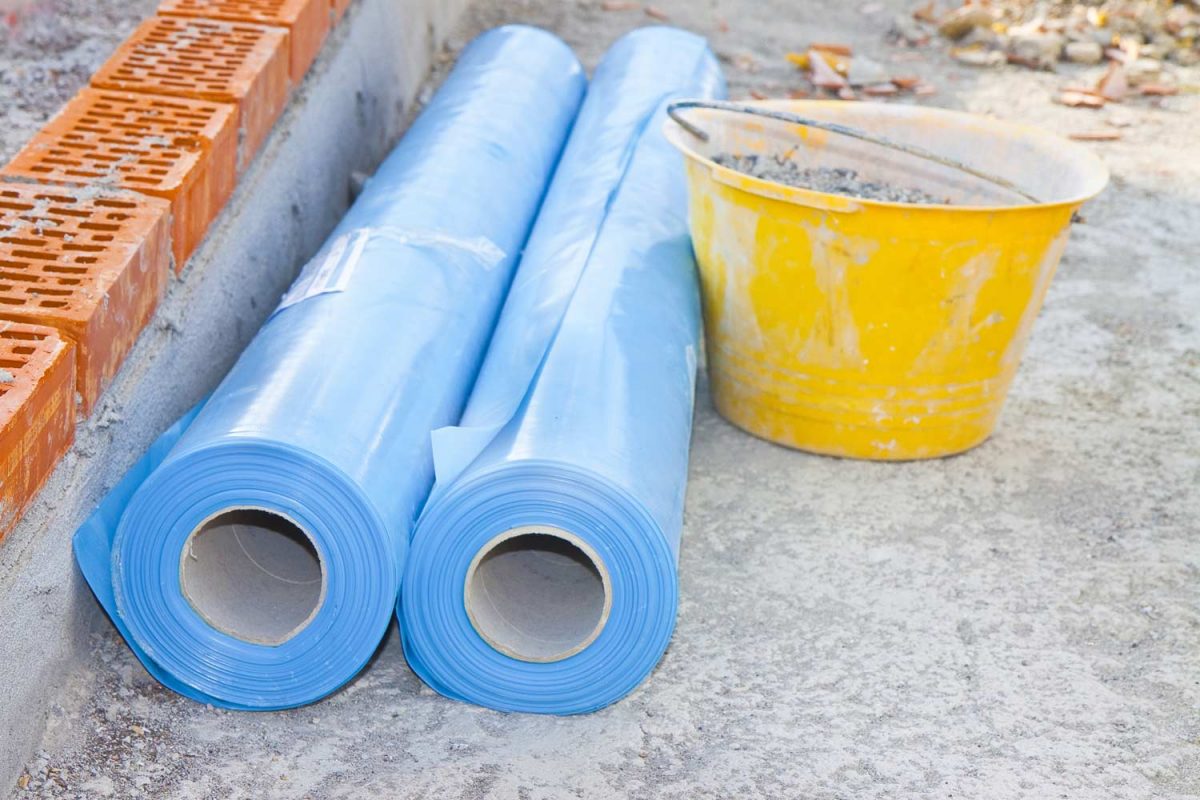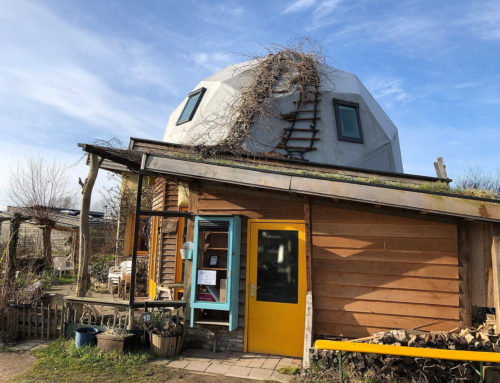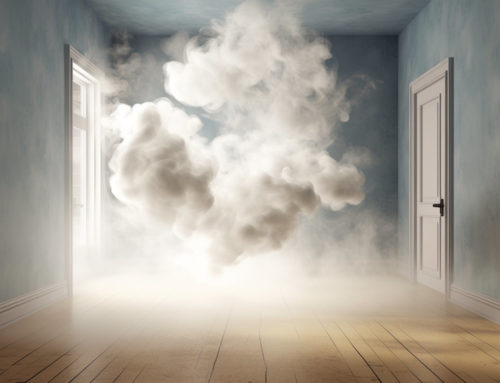Practically everyone is familiar with the three states of water: solid, liquid, and gas. Water, in its gaseous state, is an integral component of air that we know as water vapour. The percentage of water vapour is described as the air's moisture content (or humidity), and it is when this percentage is high that we begin to experience discomfort, difficulty breathing, and stickiness. Not only this, water vapour in the air has a high tendency to transform back into its liquid state on coming into contact with a cooler surface – a process known as condensation. We talk a lot about wall breathability, breathable paints – so it's all relevant!

To make it simpler, when you take a hot shower, you would notice that water droplets collect at the bathroom mirror. This is because the difference between the temperature of the water vapours and the surface of the bathroom mirror. Of course, the surface needs to be at a certain temperature for condensation to occur, and this is known as the dew point. When a water vapour comes into contact with a surface or object that has a temperature equal to, or below, the dew point, it condenses into its liquid state.
The reason you should be concerned is that condensation causes a number of issues in buildings and greatly undermines building performance and durability. It can damage the building fabric and even lead to the growth of harmful moulds that may pose a threat to human health and safety, as well as wall damage. Installing vapour barriers in buildings can help in eliminating these problems.
What is a vapour barrier?
Vapour barriers, also known as vapour retarders, as the name suggests, function to prevent the water vapours (or moisture) from permeating into the building wall and insulation. The vapour barrier is essentially made of a material that is impermeable to water, and so it prevents the building fabric from coming into contact with the moisture. This material can be made of polyethylene, aluminium foil, or it could even be a vapour retarder latex paint.
It is important to note that vapour barriers need to be installed very carefully and properly because, on faulty installation, these can stop the water from evaporating from the building fabric and lead to water retention. This can cause damage to the building fabric and reduce the building performance in terms of insulation.
Vapour barrier versus an Air barrier
Most people often confuse a vapour barrier with an air barrier. Although an air barrier may stop water vapours from entering a building, its mode of operation is entirely different from that of a vapour barrier. An air barrier stops water vapour from entering or leaving a building by stopping the air currents while a vapour barrier prevents vapour diffusion across it. So, a vapour barrier can be thought of as a raincoat while an air barrier as a windbreaker. Another difference between the two is that a vapour barrier needs to be continuous, but unlike an air barrier, it does not need to be as tightly sealed.
A combined vapour/air barrier can be used in humid areas where external moist air is frequently present. This combination of barriers is installed on the warm side of the building, and serves to reduce the vapour content both by leakage and diffusion of vapour. Some materials can function as a vapour, air and water-resistive barrier. Depending on the needs and requirements of the building, these could be used instead of the traditional vapour barrier.
What is the importance of a Vapour Barrier in your home?
A vapour barrier is designed to keep the water out of the building assemblies like the walls, floors and roofs. The main function of this is to prevent interstitial condensation from occurring and causing the problems that come with it.
One of these problems is damage to the building fabric. When water vapours come into contact with the building materials such as timber, woodwork, metal, paint, etc. it can cause problems like corrosion of metal, rotting, damage to the wood, peeling of paint and much more. A lot of money and frequent maintenance has to go into the building to neutralise the negative effects of condensation and moisture problems.
Another problem presents itself when water enters the building assemblies – this reduces the insulation of the building which calls for an increased expenditure of energy in heating or cooling to maintain the temperature and environment. A reduced insulation makes way for energy losses, decreases the energy efficiency of the building and results in higher electricity bills. In addition to this, condensation leads to dampness which creates an ideal environment for the growth of various toxic moulds, posing a serious threat to the health to the occupants
Vapour barriers are, therefore, monumental in reducing the likelihood of moisture retention and condensation in buildings and minimising all of these problems, resulting in a more energy-efficient, environment-friendly, safer and sustainable construction.
What are the types of vapour barriers for a house?
Because of the many advantages of vapour barriers, they are becoming increasingly available in the market and come in a lot of different varieties. The materials used as vapour barriers are different based upon their permeability (measured in perms), a measure of the transfer rate of water vapour through a material, and usage with respect to different surfaces.
Some of the materials that can function as vapour barriers are:
- Aluminium foils bonded to your insulation sheets
- Paper-backed aluminium
- Plastic sheets (polyethylene)
- Asphalt-coated kraft paper
- Vapour retarder latex paints
- Exterior grade plywood
- Metal sheets
Does my building or home need a vapour barrier?
Now, you would be asking yourselves, do I really need a vapour barrier in my building? The answer to this is a little complicated. Probably, the best way to be sure you need one is by consulting the contractors in your region, or your local and provincial/state building codes. In some countries, mostly North American countries, vapour barriers are a requirement for the construction of buildings.
It must also be taken into account that vapour barriers are generally not required in warmer climates, and if installed in the wrong climate, or on the wrong side of building materials, they can cause more harm than good, preventing water vapour from drying and causing rot and mould as mentioned earlier.
However, if you are still unclear on whether or not you need one, you could calculate the building's needs according to criteria given by established organisations, or better yet, hire a professional to do it for you because it is smarter to invest a little money for protection instead of risking spending a fortune trying to repair the damage later on. A general recommendation by the National Roofing Contractors Association (NRCA) is that vapour barriers should be on the interior side of a roof in any climate where the average January temperature is below 40 F (4 C) degrees and the interior winter relative humidity is 45 percent or greater.
How do you install a water vapour barrier?
Now, the installation of a vapour barrier is not very tricky and complicated. You could do it on your own, and you may not need to hire a professional to get the job done (it entirely depends on you). With the use of some DIY manuals, you could get it done with little to no extra skills, although if the finish is not carried out well, the vapour barrier would not be effective at all, so it is always advisable to have it installed by a professional. In the case you want to install it yourself, you need to consider the following steps:
- Measure the wall you need to install the vapour barrier on and note down those measurements.
- Search for a vapour barrier that is suitable for your needs. For this purpose, you could contact a supplier and explain to them your requirements or search online for a vapour barrier that you would not have much trouble installing, it is important to check the permeability of the vapour barrier before you buy it.
- Before installing the vapour barrier, you must clean the wall on which the vapour barrier is to be installed. If there is any water vapour on the wall, you should remove it, since the wall has to be dry and clean before installation. Apply caulk to the gaps or holes in the wall and around the windows.
- Attach the vapour barrier of your choice to the wall using a staple gun. Apply tape to all the joints in the vapour barrier, to any seams or gaps to seal the barrier correctly. Be sure to use a tape that is specifically designed for this purpose, otherwise, the barrier may not properly seal off and be rendered useless.
To sum it all up, installing vapour barriers is an effective way to make a building more eco-friendly and sustainable. Having vapour barriers can be a great way to cut back on costs involved in the maintenance and repair of buildings; moreover, a vapour barrier minimises energy losses, increases the energy efficiency of a building, and makes way for a more comfortable environment to breathe in.
You are more aware of whether or not your building needs a vapour barrier or the kind it needs now. If you are having one installed, you must make sure that traditional builders are aware of the importance of vapour barriers because it needs to be an informed decision by you or a professional, for choosing or not choosing to install one. In the end, it is your building and your money, so you need to research properly and choose wisely.
See Also: How to get rid of mould on walls naturally | Why breathable paint may be one of the best paints to stop mould
Check for mould, it’s far more of a hazard than you think. Indoor Air quality should be your priority!
What is Mould? Moulds are a form of fungus. There are many different types, and they can occur both indoors and outdoors, creating a degradation in indoor air quality. They spread by releasing spores [...]
Upgrading to an Greener Home
Whether you want to enhance the energy efficiency of your home by making small, yet cost-effective, changes, or if you're about to embark on a home improvement project to make your house greener, either way, [...]
Basic principles & goals of bioclimatic design for the eco & sustainable home
The terms “green building” or “bioclimatic design” refer to the design of buildings and facilities based on local climate, aimed at providing thermal and visual comfort with minimal consumption of conventional energy while utilising other [...]
Upgrading to an Energy Efficient Home
The concept of energy efficiency has been around for quite a few decades now, but it has only recently caught momentum. With global warming and depletion of our natural resources, we have become acutely aware [...]
The Dangers of Chemical Exposure to the Painter and Decorator from Petrochemical House Paints
Introduction to chemical exposure for painters and decorators. Household paints are undoubtedly one of the most integral visual components of a building. A good combination of colour accents and nice, even coats can enhance the [...]
What is sugar soap and do I need to use it?
Preparation is key for a good surface - Can Sugar soap actually help? TL;DR Just use a natural sugar soap alternative like this one and skip the nasty chemicals in 'normal' sugar soap! As [...]

Hi! I’m Chris, the founder of The Organic & Natural Paint Co, and I’m focused on the education and promotion of natural non toxic alternatives to chemical laden everyday products that we just take for granted. We have a choice, and I want to raise awareness of alternative products that don’t actually harm us!
This company is my way of pushing the awareness of better indoor air quality, something that I am personally passionate about due to my own children’s breathing medical conditions. I just couldn’t paint with big brand standard petrochemical paint any longer and wanted another solution.
Read more: About me
Twitter: NaturalPaintCo
Instagram: cleanairclubofficial





















